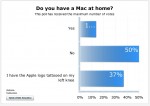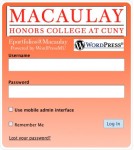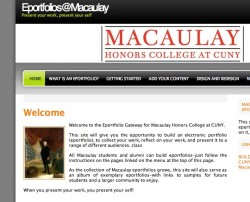 It’s not like there aren’t enough iPhone reviews out there, but this is mine! If you don’t want to read my whole review, here’s the bottom line.
It’s not like there aren’t enough iPhone reviews out there, but this is mine! If you don’t want to read my whole review, here’s the bottom line.
I love it. It’s great. Some flaws, but nothing that can’t be corrected, and even with the flaws, it’s totally, totally worth every penny.
Now–my background. I’m moving to the iPhone from the Treo 650. I owned the Treo for almost three years, and I liked it very much. Bought it new for full price (which was only a little less at the time than the iPhone is now), and used it every day. I am not one of the high-powered productivity fiends who are the biggest Blackberry customers. I don’t depend on the phone or instant email for critical business. I also used my iPod every day, for music and podcasts.
So–the iPhone. Let’s take the categories of the functions it offers.
The Phone. First of all, it’s a cellphone. It’s a great phone. I don’t care about voice dialing, had it on the Treo and never used it even once–never even set it up. I do have a bluetooth headset (just got it a couple of weeks ago) for when I’m driving, and it paired immediately with the iPhone, no trouble at all. The sound quality for listening and talking on the iPhone is terrific. Much better than I’m used to, and that’s the case when using it held up to my head, using the speakerphone, using the bluetooth headset, or using the builtin mike in the iPhone earphones (that was a surprise feature! More about that later).
People have complained about ATT reception and service areas, and that has been no problem for me whatsoever. In fact, with the Treo, I had Sprint, and that was much worse–in my own house, I got almost no reception at all. With ATT, I get great reception everywhere so far.
The controls (dialing, hold, conference calling) and the contacts (especially the picture caller ID) are just perfect–efficient, easy to use, even attractive (and more about that later). You can’t add custom ringtones, a fact that people complain about, but that doesn’t really bother me. I almost always keep it on silent and vibrate anyway. The vibrate might be a little weaker than it was on the Treo. It would be fun to use my own mp3 (I used to use the bosun’s whistle sound from Star Trek) for a ringtone, and if they make that possible later it would be good, but it’s far from essential.
It does get a little warm when you hold it to your ear on a long call–like any cellphone.
The Internet The browser is great. The screen (and this is a feature that helps everything on the iPhone), is the brightest, clearest, most beautiful screen I’ve ever seen. It’s absolutely gorgeous, including in bright sunlight. Having the pages display as real websites, not a WAP-crippled version, really helps. I can even read the small text sometimes without zooming in, and when I need to zoom, it’s quick and easy and intuitive. The browser is super fast on wifi, and even though people complain about Edge, even on Edge it’s much faster than what I was used to from the Sprint Treo. Flash support would be a very good addition–that’s the biggest lack, but from what I hear, it’s coming soon–maybe by the fall.
The Keyboard The lack of a period key on the main keyboard is a little bit of a drag (although I learned that it is a drag–if you drag your finger from the “123” key to period, you don’t have to really leave the main keyboard), and it’s taking some getting used to for me to appreciate the auto-correct function, but after even just about half an hour of using it, I could see that it’s going to be way better than the Treo. I wouldn’t want to type long extended things on it (this post is typed on my computer, not the iPhone), but that’s the case for any portable device. For small emails or text messages, or for URL’s, it’s going to be faster and easier than the other keyboards, I’m sure.
I don’t mind the lack of touch feedback. The visual feedback is good, and there’s sound if you want it turned on. I never was able to type on the Treo without looking anyway–and I don’t think people do that on the Blackberry (I may be wrong). Another thing that seems to get ignored is that mechanical, physical keyboards tend to break or get clogged up with gunk. On the Treo, the “H” key was reluctant to register for quite some time–overuse and dirt, I’m sure. That will never be a problem with the iPhone keyboard.
Email I’ve used it with gmail and with POP access to another (work) server. It’s totally fine. The engadget review mentioned a delay in moving from one message to another or in deleting messages. I notice no such thing. It’s almost instantaneous. Unfortunately, there is no bulk email deletion–you do have to go one at a time–and that’s a drawback. Also, in Gmail, because of the way Gmail structures “conversations” you get a copy in your inbox of every message you send. Too bad, but it’s not an iPhone problem, it’s a Gmail problem.
Of course there’s no push (other than Yahoo). You can set it to auto-check at different intervals (every 15 minutes is the most frequent), but I’m not doing that. If you really get hundreds of emails a day, you’re probably better off with a Blackberry. But that’s not me.
Here, too, the screen and the appearance help a lot. If you get html email, the colors and fonts show right up. If you have picture attachments, they show up, too. The way things slide on and off the screen, or into the garbage can when you delete them–the animations–are fantastic.
iPod The sound quality is great. The navigation in cover flow, and the album art (again, the beautiful screen), it’s all beautiful. The included headphones have a (very tiny) little microphone/button built in to the cord–and that allows you to pause, resume, or go to the next song without taking the iPhone out of your pocket. It also automatically pauses the music and lets you answer a phone call, just by clicking it, and then resume the music after the call. You don’t have to put the phone to your ear–just click and talk.
There is one big bug right now. You can not browse the web and listen to the iPod at the same time. Well, you can–but it will constantly crash (not a major crash–it just stops playing the music) every few minutes. I’m hoping they’ll fix that soon. I don’t want to browse and listen to music all the time, but it is one of the promised features, and I do want to be able to do it, when the opportunity arises. It’s been widely reported, so I’m sure Apple’s aware of it. It’s clearly a bug, and whatever it takes, it needs to be fixed.
I’ve read the complaints about not being able to use third-party headphones without an adapter. To some extent that’s true. However there are a few things to mention about that–one is that the iPod headphones that are included seem to be better sound quality than included headphones used to be with iPods, and the little clickable microphone thing on the cord is a big, big benefit. So third-party headphones might not be so necessary. The other thing is that the jack is actually a standard jack, it’s just recessed (maybe to protect the jack from twisting or pulling of the cord?), so most third-party headphones, because of the rubber sleeve around the jack, won’t fit. But–what I did with the cord for my car’s cassette adapter and my Sony headphones is very easy. If you take an Xacto knife and shave away some of that rubber, you don’t need any adapter, or anything. Your headphones will work just fine. It’s a little ugly, and messes up your headphones’ appearance (not much, but a little), and I can see that if you had a super-expensive pair you might not want to do that, but it works fine for me. In fact, I’m planning to do even more surgery, I think, and graft the Sony earbuds onto the iPhone cord, so I can have the comfortable earbuds with better sound, and still use the clickable microphone thing.
Other Features The camera is great–much better than the Treo (however, it is a cellphone, not a digital camera). No video, but maybe someday, and again, you can use a real camera if you want video. The Google maps feature is amazing–clear, sharp, and (in wifi) very fast–satellite view looks fantastic.
The YouTube is fun–and I’m seeing great teaching and learning possibilities there. It’s easy to upload videos (student-created or instructor-created) to YouTube, and students can then watch them on a portable device, in the field, in a museum, on a walking tour, at the library…and those videos can be screen captures, slideshows, maps, logic puzzles–there are lots of possibilities. Even better, one thing that the iPhone has that iPods don’t, is a speaker–not a great speaker, but decent. So YouTube videos, or video or audio on the iPod function, can be shared. That’s a great benefit-students can share content with each other, working collaboratively, with a little portable device.
I think it’s likely, too, that there are more features to come–the thing is basically a very small computer, with a phone, that can be carried around. It’s approaching the ideal tricorder. It doesn’t have all the sensors yet, although the proximity sensor that it uses to sense a nearby face and turn off the screen might have some interesting possibilities, like the sensors that determine the orientation and automatically flip the screen to landscape or portrait mode. I’m also interested in the camera as a sensor–reading bar codes? facial recognition? character recognition? It’s not the highest resolution ever, but I think the use of what is actually a visual sensor for teaching and learning (in a mobile environment–outside the classroom) deserves more thought.
The Notes function is lame. It doesn’t sync with anything.
The Calendar is excellent–mostly (again) because of the screen and interface. It syncs great with iCal, but unfortunately just puts all your calendars into one–doesn’t keep them separate if you have separate calendars for, say, work and home. So that’s a flaw.
The SMS is good (but no automatic smilies 🙁 )–and if you really want chat, there is Meebo, the Weather is fine, the Clock and Calculator are fine (the Clock has some good functions, the Calculator is very standard–neither one is anything to get excited about, but who really gets excited about clocks or calculators? Not me).
I don’t have any use for Stocks, and haven’t even looked at it. I’d eliminate it if I could. Couldn’t care less.
Syncing is really quick and easy–and you can disconnect in the middle with no problem. Another feature that I haven’t seen anyone mention is that you can sync to different computers for different things. I have my music library on a PC, so I sync to that for the iPod function, and my contacts and calendar on a Mac (that syncs to Google Calendar), so the iPhone can sync to that machine for those functions–it’s not tied to one single computer for syncing.
Overall I can’t say enough for the look and feel. INTERFACE MATTERS. That’s the big lesson of all Apple products, and the look and feel here are really revolutionary. It’s just so much better than any other similar product that there really aren’t any similar products. The animations and interactions are not just eye-candy. They help make the device more usable, they play into our intuitive senses of how things work and what we’re doing. And the screen is just so great to look at!
The flaws are not serious…and the fact that Apple can fix them (and will they? I think so–hope so), transparently, automatically, when you sync, which you’re going to do anyway!
The very biggest flaw (aside from the crashing when browsing and listening to music, which is clearly a bug that needs to be fixed), is that there is no way to read ebooks. I may be one of the very few people in the world who actually likes to read whole books on the portable device, but I read many of them (dozens) on my Treo, and with the great screen on the iPhone, it would be so, so much better. Apple has to come up with something for this. ITunes can already handle pdf’s, so I’m hopeful. But this is the only really serious drawback for me–reading on the subway one-handed, without having to take a paper book out of my bag, had become a very pleasant routine for me.
Again, bottom line, this device is great. And no, I didn’t wait in line at all. I walked into the Apple store (with my wife and kid) at a mall in New Jersey just off the highway on my way home from vacation, bought two iPhones, and walked out. No shortage, no struggle. And the activation on iTunes took all of 10 minutes–for two iPhones–once I got home.
There are more features and more things for me to discover–and I probably forgot to mention some things here–but that’s the general response.
Call me fanboy if you like! I can’t protest!





 It’s not like there aren’t enough iPhone reviews out there, but this is mine! If you don’t want to read my whole review, here’s the bottom line.
It’s not like there aren’t enough iPhone reviews out there, but this is mine! If you don’t want to read my whole review, here’s the bottom line.